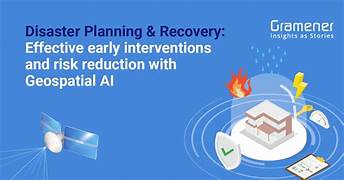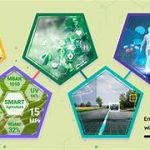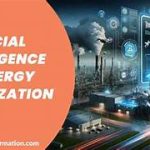AI Applications in Managing and Analyzing Environmental Data
In the quest to address global environmental challenges, managing and analyzing vast amounts of environmental data has become essential. Artificial Intelligence (AI) has emerged as a transformative technology in this realm, enabling more efficient data collection, analysis, and application. AI-powered tools are being utilized across various sectors to improve environmental management, predict changes, and implement sustainable solutions.
The Importance of Environmental Data Management
Environmental data encompasses information related to weather patterns, natural resource usage, pollution levels, biodiversity, and more. Properly managing this data is crucial for understanding and addressing issues such as climate change, habitat loss, and natural disasters. However, the sheer volume and complexity of environmental data require advanced tools for effective handling.
AI facilitates data-driven decision-making by:
- Automating data collection and processing.
- Identifying patterns and trends that may be invisible to human analysts.
- Generating actionable insights to guide policy and business strategies.
AI Applications in Environmental Data Management
1. Remote Sensing and Monitoring
AI algorithms process data collected from satellites, drones, and other remote sensing technologies to monitor environmental changes. For example:
- Deforestation Tracking: AI identifies deforestation activities by analyzing satellite imagery, enabling authorities to take timely action.
- Ocean Health Monitoring: Machine learning models analyze data on water temperature, salinity, and pollution to assess the health of marine ecosystems.
2. Climate Modeling and Forecasting
AI enhances the accuracy of climate models by processing vast datasets, including historical weather data, greenhouse gas concentrations, and ocean currents. Key benefits include:
- Predicting extreme weather events such as hurricanes, droughts, and heatwaves.
- Simulating future climate scenarios to guide mitigation and adaptation efforts.
3. Biodiversity Conservation
AI supports biodiversity monitoring by:
- Identifying species in images and audio recordings using computer vision and natural language processing.
- Predicting the impact of human activities on wildlife populations and habitats.
- Recommending conservation strategies based on predictive analytics.
4. Pollution Monitoring and Control
AI systems detect and monitor pollution levels in air, water, and soil. For instance:
- Sensors equipped with AI analyze air quality in real-time, identifying sources of pollution.
- Machine learning models assess the effectiveness of pollution control measures, optimizing resource allocation.
5. Resource Management
AI optimizes the management of natural resources such as water, energy, and minerals by:
- Predicting demand and supply patterns to minimize waste.
- Enhancing the efficiency of resource extraction and distribution processes.
- Identifying alternative, sustainable resource options.
AI-Powered Tools for Disaster Prediction and Response
Natural disasters cause significant damage to life, property, and ecosystems. AI-powered tools play a critical role in mitigating these impacts through early prediction and efficient response strategies.
1. Early Warning Systems
AI enhances early warning systems by analyzing data from various sources, including seismic sensors, weather satellites, and social media. Applications include:
- Predicting earthquakes and tsunamis by detecting precursor signals.
- Forecasting cyclones, floods, and wildfires with greater accuracy.
- Disseminating timely warnings to at-risk populations.
2. Real-Time Disaster Monitoring
AI processes real-time data to provide situational awareness during disasters. Examples include:
- Mapping flood extents using satellite imagery and AI algorithms.
- Monitoring wildfire spread with drone-captured data and predictive models.
- Assessing damage to infrastructure and ecosystems through automated image analysis.
3. Optimizing Emergency Response
AI supports emergency response efforts by:
- Allocating resources such as medical supplies and personnel based on real-time needs.
- Optimizing evacuation routes using traffic and terrain data.
- Analyzing social media posts to identify affected areas and prioritize aid distribution.
4. Post-Disaster Recovery
AI facilitates recovery efforts by:
- Evaluating the long-term environmental and economic impacts of disasters.
- Recommending sustainable rebuilding practices.
- Tracking the progress of recovery initiatives using data-driven metrics.
Success Stories of AI in Environmental Data Management
Several organizations and projects demonstrate the potential of AI in managing and analyzing environmental data:
- Google’s Environmental Insights Explorer (EIE): This platform uses AI to estimate city-level carbon emissions, helping municipalities develop targeted climate action plans.
- UN Global Pulse: The UN initiative leverages AI to analyze data from satellite imagery, social media, and other sources for disaster response and sustainable development.
- Wildlife Insights: This AI-powered platform processes camera trap data to monitor wildlife populations and inform conservation strategies.
Challenges and Limitations
Despite its potential, AI in environmental data management faces several challenges:
1. Data Gaps and Biases
AI models require large, high-quality datasets to perform effectively. Inadequate data or biases in data collection can lead to inaccurate predictions and recommendations.
2. High Costs and Technical Barriers
Implementing AI solutions often involves significant investment in technology, infrastructure, and expertise. Developing countries may face barriers to adoption.
3. Ethical and Privacy Concerns
The use of AI raises ethical questions regarding data privacy, especially when analyzing sensitive information such as land ownership or resource usage.
4. Integration Challenges
Integrating AI tools with existing systems and processes can be complex, requiring cross-sector collaboration and capacity-building efforts.
The Future of AI in Environmental Data Management
The role of AI in managing and analyzing environmental data is expected to grow, driven by technological advancements and increased awareness of sustainability issues. Key trends include:
1. AI and IoT Synergy
The integration of AI with the Internet of Things (IoT) will enable real-time monitoring and management of environmental resources. Smart sensors and devices will collect data, while AI analyzes it to inform decisions.
2. Decentralized Data Platforms
Blockchain technology combined with AI will facilitate transparent and decentralized data sharing, fostering collaboration among stakeholders.
3. Advanced Predictive Analytics
Next-generation AI models will offer more accurate and nuanced predictions, supporting proactive environmental management.
4. Citizen Science and Crowdsourcing
AI will empower citizens to contribute to environmental data collection and analysis, democratizing access to technology and insights.
Conclusion
AI is revolutionizing the way we manage and analyze environmental data, offering unprecedented opportunities to address global challenges. From remote sensing and climate modeling to disaster prediction and resource management, AI-powered tools enable more effective and sustainable environmental practices. While challenges remain, continued innovation and collaboration will unlock the full potential of AI in creating a resilient and sustainable future.


